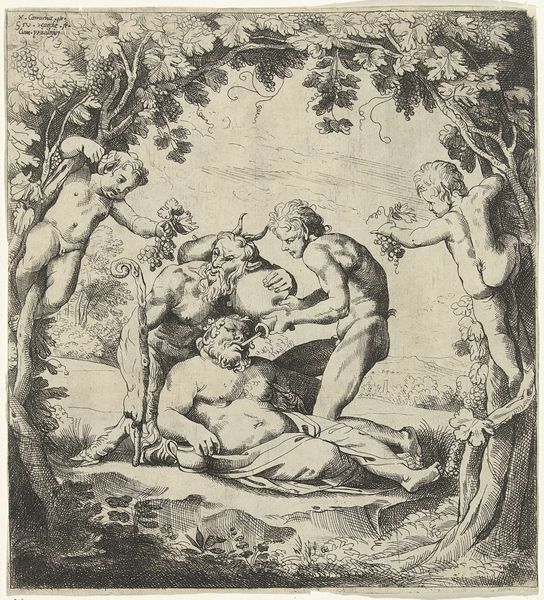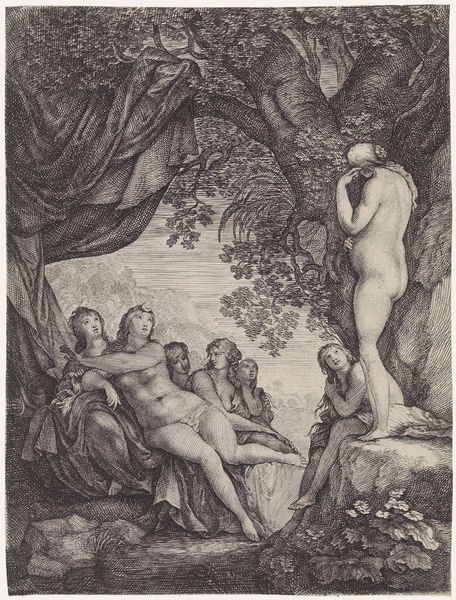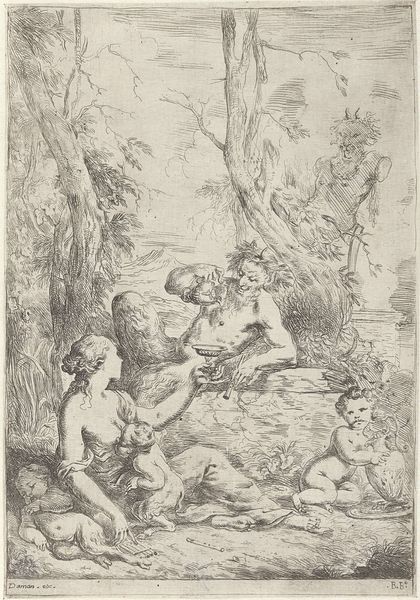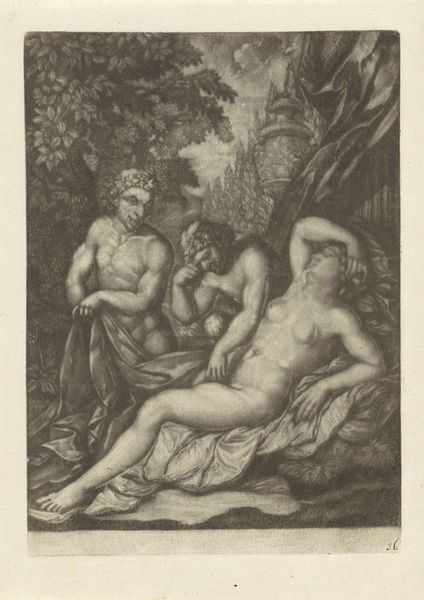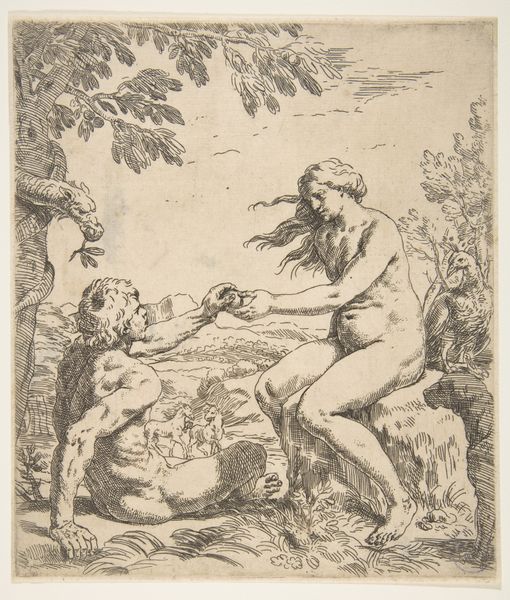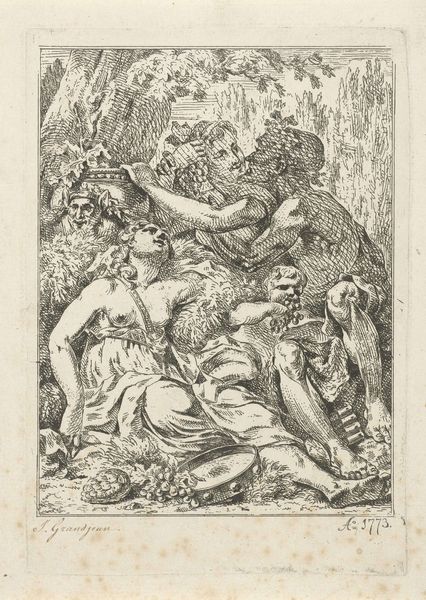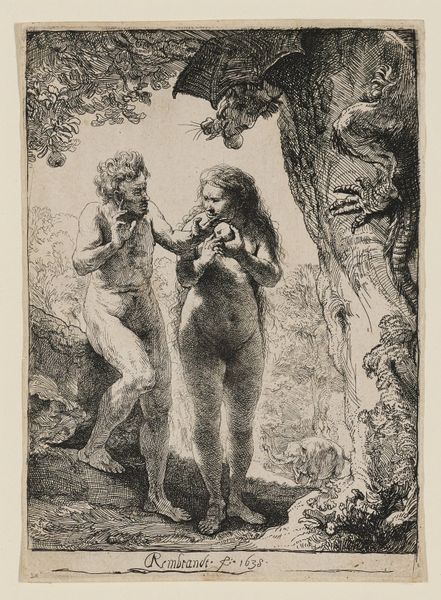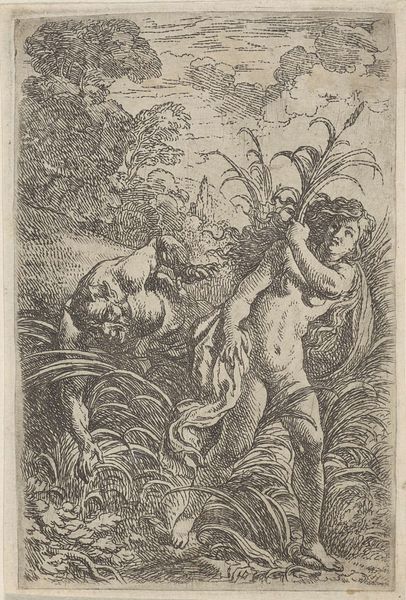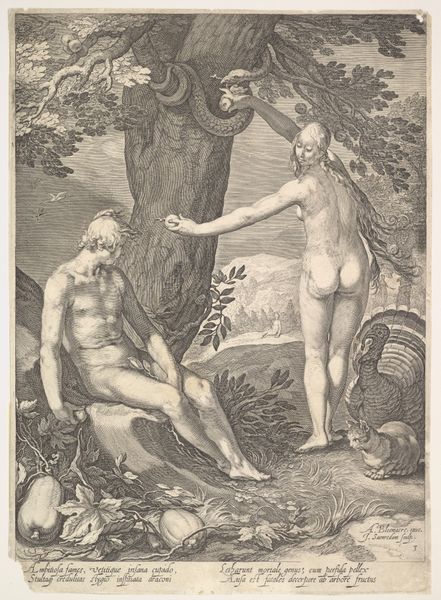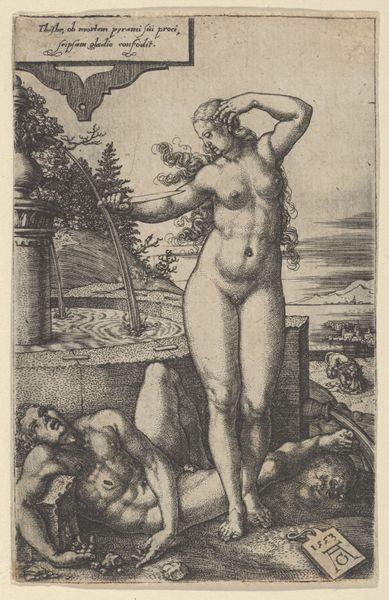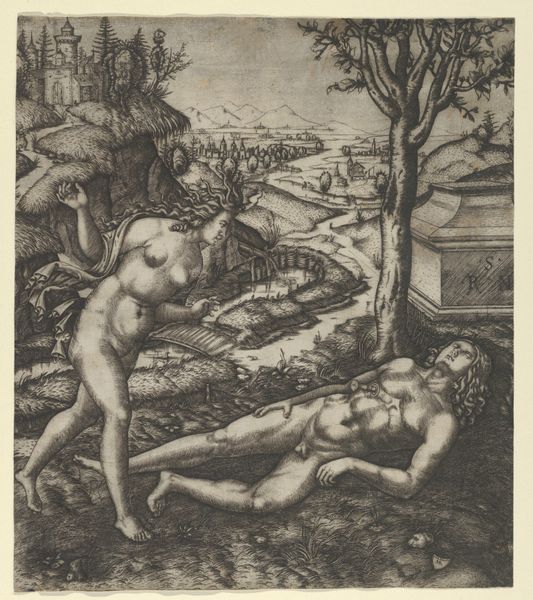
drawing, etching, ink, engraving
#
drawing
#
ink drawing
#
baroque
#
pen drawing
#
etching
#
figuration
#
form
#
ink
#
line
#
history-painting
#
nude
#
engraving
Dimensions: height 298 mm, width 201 mm
Copyright: Rijks Museum: Open Domain
Curator: I’m immediately drawn to the detail in this scene! All of these figures rendered with such fine lines and textures. Editor: That’s the magic of Cornelis Holsteyn's work. This piece, "Bacchus troost Ariadne," roughly translated as "Bacchus Consoling Ariadne", was completed sometime between 1628 and 1658, and we can appreciate it here today at the Rijksmuseum. It is executed in etching and engraving, which lends itself so well to the dynamic line work we observe here. Curator: You can sense Holsteyn’s baroque influences—the bodies feel so alive, brimming with emotion. There's a dramatic tension, a theatrical flair almost. And Bacchus placing his hand over his heart feels heavy with intent. Editor: Exactly! The story it tells resonates deeply. Ariadne, abandoned by Theseus, finds solace in Bacchus, the god of wine. Note Bacchus’s positioning within the work; how he’s surrounded by his revelers: nymphs, satyrs, all symbols of hedonism and celebration. He's almost radiating a redemptive energy, and look how Ariadne’s pose seems to both reflect her former despair and invite this new relationship. Curator: Absolutely, and the contrast between her languid pose and his commanding stance is so important. She is at first inconsolable. Bacchus, by offering love and perhaps even oblivion through wine, shifts the course of her narrative. It also reminds us of the power of stories and myths; each element is placed thoughtfully for maximum storytelling impact. Editor: Which brings us to the significance of the leafy crown that each figure wears, a symbolic motif of the mythos surrounding Bacchus and the forest. Bacchus often serves as a figure that symbolizes joy, celebration and, more broadly, the intoxicating effects of earthly pleasures. I can't help but wonder if, by placing his hand on his heart, he suggests that a true antidote for heartache exists, that joy may bloom anew, even from sorrow. What do you think? Curator: I love your interpretation. It’s pieces like these that show us art acts as a mirror, reflecting both individual human dramas and overarching symbolic stories. Each glance can reveal something unique. Editor: Absolutely. I came into this dialogue ready to observe detail, yet leave reflecting upon emotionality and a new awareness of this myth’s complex layering of love, loss, and yes, perhaps new beginnings.
Comments
No comments
Be the first to comment and join the conversation on the ultimate creative platform.
